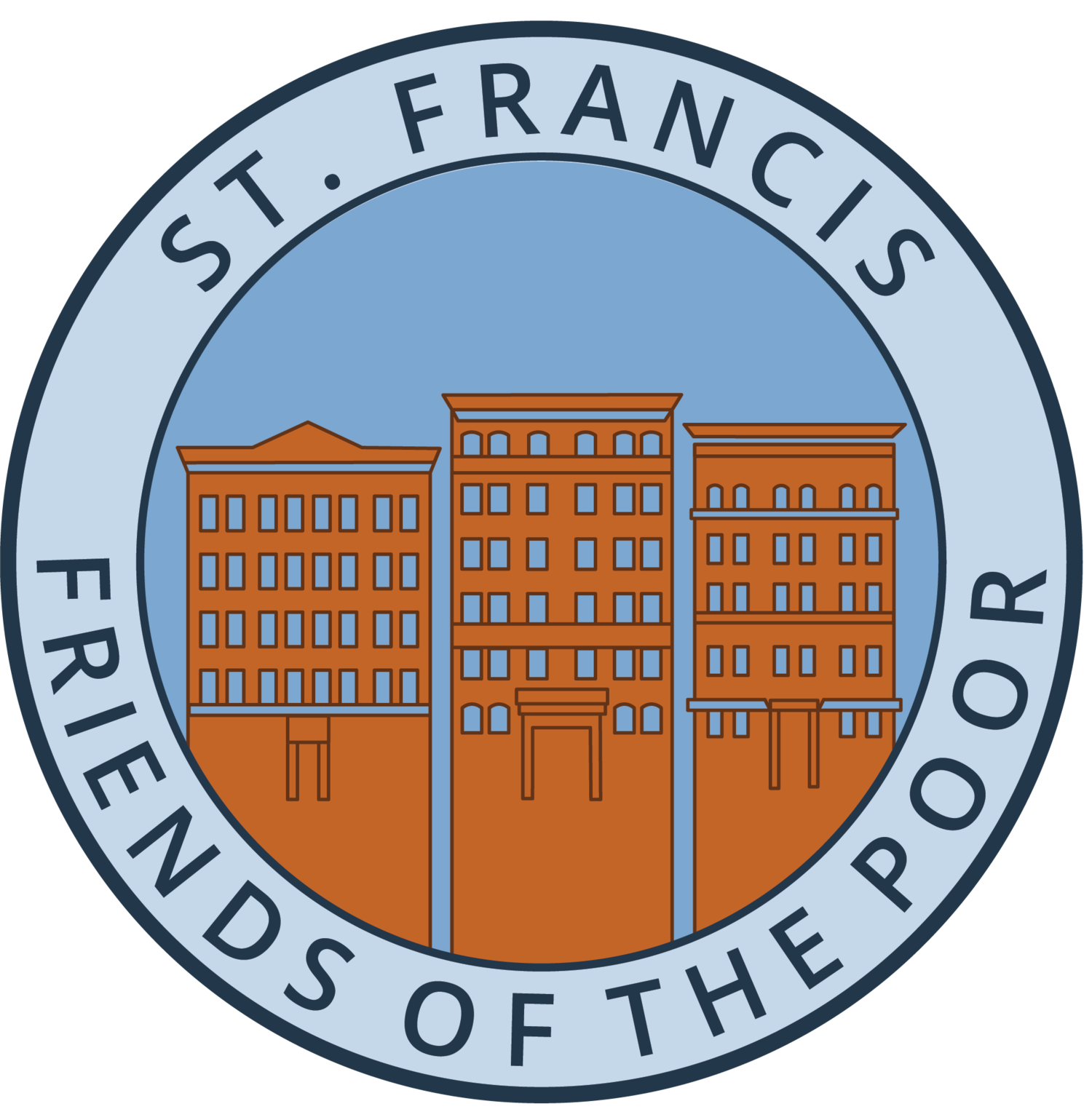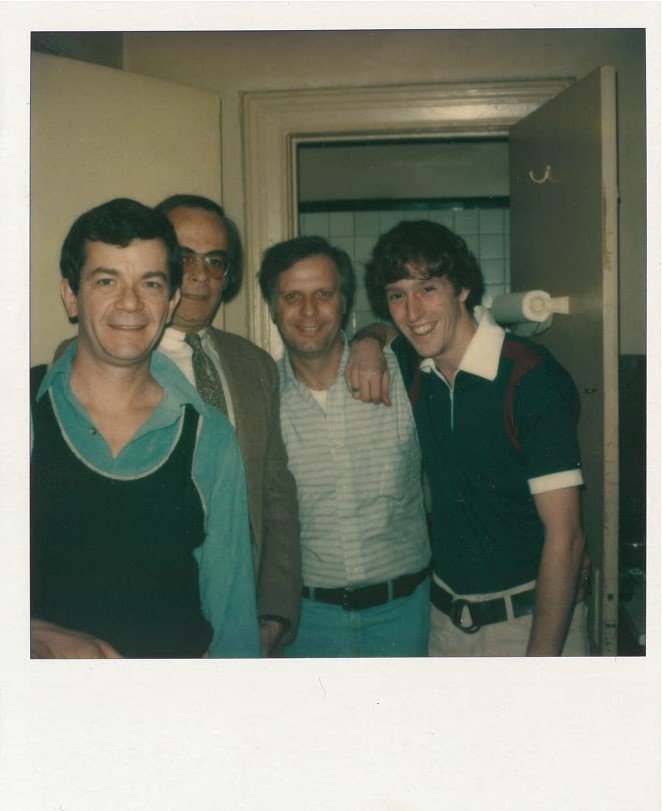Celebrating Mental Health Awareness: How Permanent Supportive Housing Transforms Lives in New York
Jean (left) has been a tenant at the St. Francis Residences since the 1970s. She has lived in the same bedroom since the building was a single-room occupancy (SRO) hotel before St. Francis Friends of the Poor was founded.
May is Mental Health Awareness Month, a time to shed light on the challenges faced by millions of Americans living with mental illness by providing education to eradicate stigma. In this blog, we explore the pivotal role that Permanent Supportive Housing and Saint Francis Friends of the Poor play in providing formerly homeless New Yorkers living with serious mental illness with long-term mental health care and stability.
But first, here is background on mental illness:
What is Mental Illness?
Mental illness is characterized by a clinically significant disturbance in an individual’s cognition, emotional regulation, or behavior. According to the World Health Organization, 1 in 8 people, or 970 million individuals, live with a mental disorder. The conversation surrounding mental health is more important than ever, as mental illness among New Yorkers has significantly increased in the past decade.
New Yorkers’ Mental Health Needs Have Increased
New Yorkers’ mental health needs significantly increased from 2021 to 2022. Federal data reveals that 1 in 5 adults live with mental illness, and 1 in 20 live with serious mental illness, or about 783,000 individuals. Serious mental illness is defined as a mental illness that not only interferes but severely limits someone’s major life functions. From 2013 to 2022, New York State’s public mental health system served 23% more New Yorkers.
3.2 million New Yorkers are living with a mental illness.
The state Office of Mental Health attributes the growth to:
expanded eligibility standards
more significant efforts to achieve behavioral health parity
higher demand for treatment services
increased awareness of mental health issues
efforts to reduce stigma
COVID-19 may have contributed to an uptick in mental disorders due to increased stress, loss of jobs or housing, and significant shifts in daily life.
New York is Expanding Mental Health Care
In March, Governor Kathy Hochul launched a $102 million effort to broaden wraparound care for individuals with serious mental illness. The budget is broken down as such:
$92 million to develop 26 Critical Time Intervention teams, which provide continued support and care coordination for individuals living with mental illness.
$10 million to create additional ‘Safe Options Support’ teams that focus on youth and young adults; the Safe Options Support initiative has already helped nearly 390 long-term homeless individuals move from the streets into stable housing.
The announcement is part of Governor Hochul’s $1 billion plan to strengthen New York’s mental health services. The multi-year plan includes increasing operational capacity by 1,000 beds for inpatient psychiatric treatment and creating 3,500 units of housing to serve New Yorkers with mental illness. It will compensate for the loss of 990 beds in inpatient psychiatric hospitals in New York State since April 2014.
“The mental health crisis is the defining challenge of our time, and New York will deploy every resource at our disposal to address this crisis.”
– Governor Kathy Hochul
What is Permanent Supportive Housing?
While short-term psychiatric services are essential to reduce unmet mental health needs, St. Francis Friends of the Poor forges long-term solutions to end chronic homelessness for New Yorkers with serious mental illness through permanent supportive housing.
Permanent Supportive Housing is an equitable model for supporting marginalized populations that combines permanent housing and in-house social services. Nearly 300 formerly homeless individuals with histories of chronic homelessness and serious mental illness benefit from this model and reside in three St. Francis Residences in Chelsea, Manhattan.
St. Francis Friends of the Poor operates with compassion and equity to combat homelessness for those with serious mental illness. Our two commitments form the basis of permanent supportive housing:
Every human being is worthy of respect, no matter how battered or bruised life has treated them. We accept the isolated members of our society and seek to maximize their humanity and dignity within the framework of their illness.
Our most important task is to form a community among a population that struggles with isolation. The wide variety of activities available to our tenants is only part of the effort to build a familial atmosphere. At the heart of this effort is the value placed on each individual and their share in the larger community.
With permanent supportive housing, tenants have their own private bedrooms and can come and go as they please. In-house social services ensure tenants are equipped with resources, and community activities, particularly art and music, are central to the community-building experience.
What is the origin of Permanent Supportive Housing and St. Francis Friends of the Poor?
St. Francis Friends of the Poor pioneered the permanent supportive housing model in the mid-1970s to respond to the homelessness crisis. The decade prior, New York State discharged thousands of patients from its psychiatric institutions, anticipating better care in communities instead of warehousing patients in institutions. However, there was not a community to receive newly released patients. Some had families who took them in, but most ended up living on the streets. Those in desperation found refuge in single-room occupancy (SRO) hotels, both in operation and abandoned.
Before the late 1970s, the homelessness crisis we experience today did not exist.
(Left to right) Fr. John McVean, Al Pettis, Fr. John Felice, Fr. Tom Walters
Property developers knocked down SROs and dilapidated hotels at an alarming rate to make room for market-rate housing. Gentrification pushed New Yorkers out of their apartments in neighborhoods like the Upper West Side and onto the streets. Again, the most vulnerable New Yorkers were left homeless with nowhere to go.
Three Franciscan Friars from St. Francis of Assisi Church in Chelsea, Manhattan, saw a problem and an opportunity to address it. They combined housing, medical care, and personal support to keep vulnerable people from living on the streets.
The project proved so successful that it became a national model for the permanent supportive housing movement. It has been replicated repeatedly by organizations all over New York City and other cities seeking to aid the disenfranchised. After St. Francis Friends of the Poor opened its first residence in 1980, it did so again in 1982 and 1985. The residences are currently undergoing renovations and continue to house 300 tenants at a time. Among those are the original tenants of 1980, who live long and healthy lives.
Get Involved with St. Friends of the Poor
Our mission to permanently house vulnerable New Yorkers comes to life when friends like you get involved.
Donate Today. Your support provides a permanent home and community to nearly 300 formerly homeless folks living with serious mental illness at our three residences in New York City.
Volunteer. Share your talents to enhance our social, artistic, educational, and recreational programming as we work together to build community and promote well-being.
Corporate Sponsorships. We provide opportunities to individuals and corporations wishing to make an impactful gift to a program or activity that resonates with their philanthropic or marketing goals.
Career Opportunities. Join our mission-driven team to transform the lives of our tenants.





